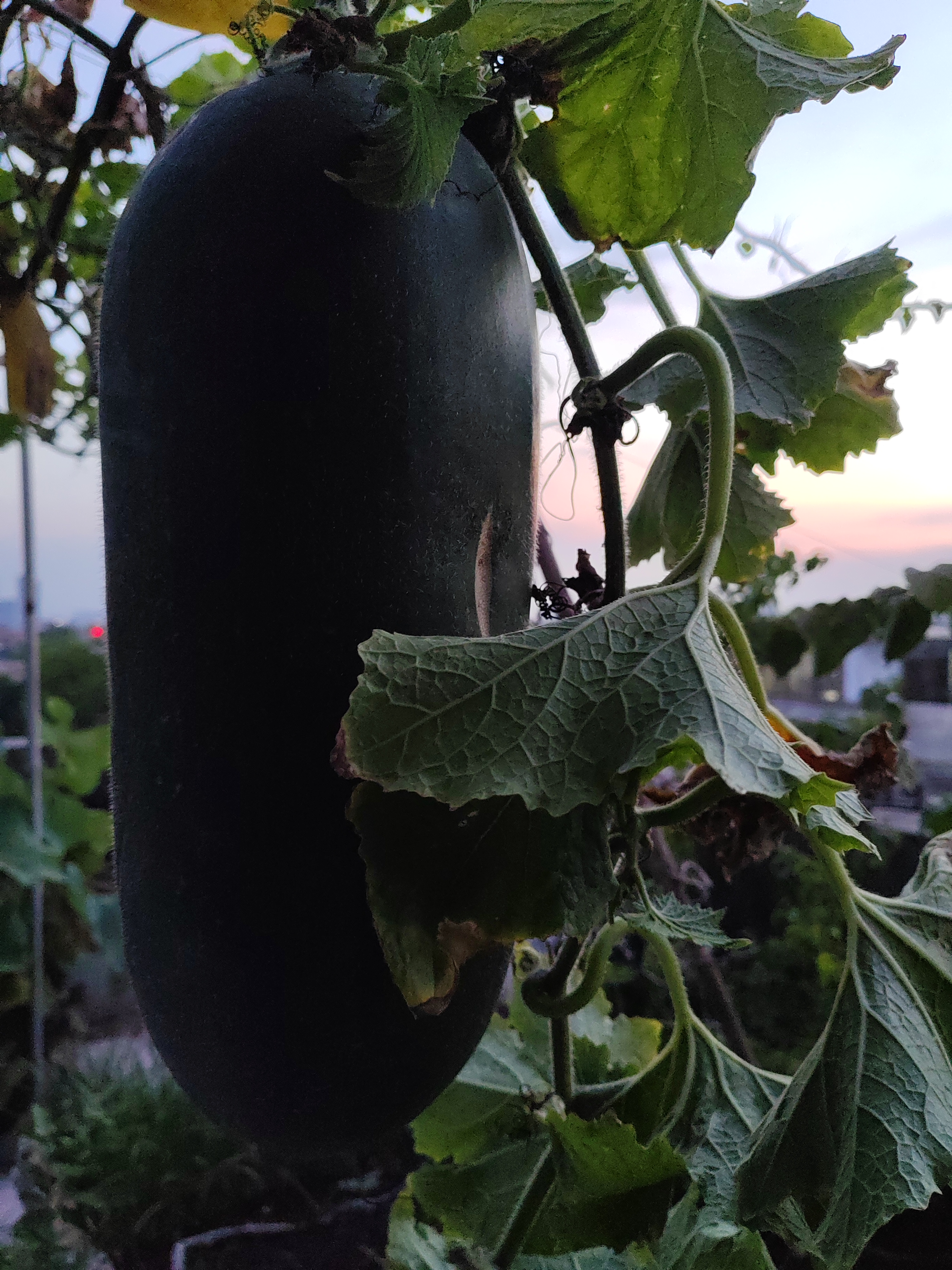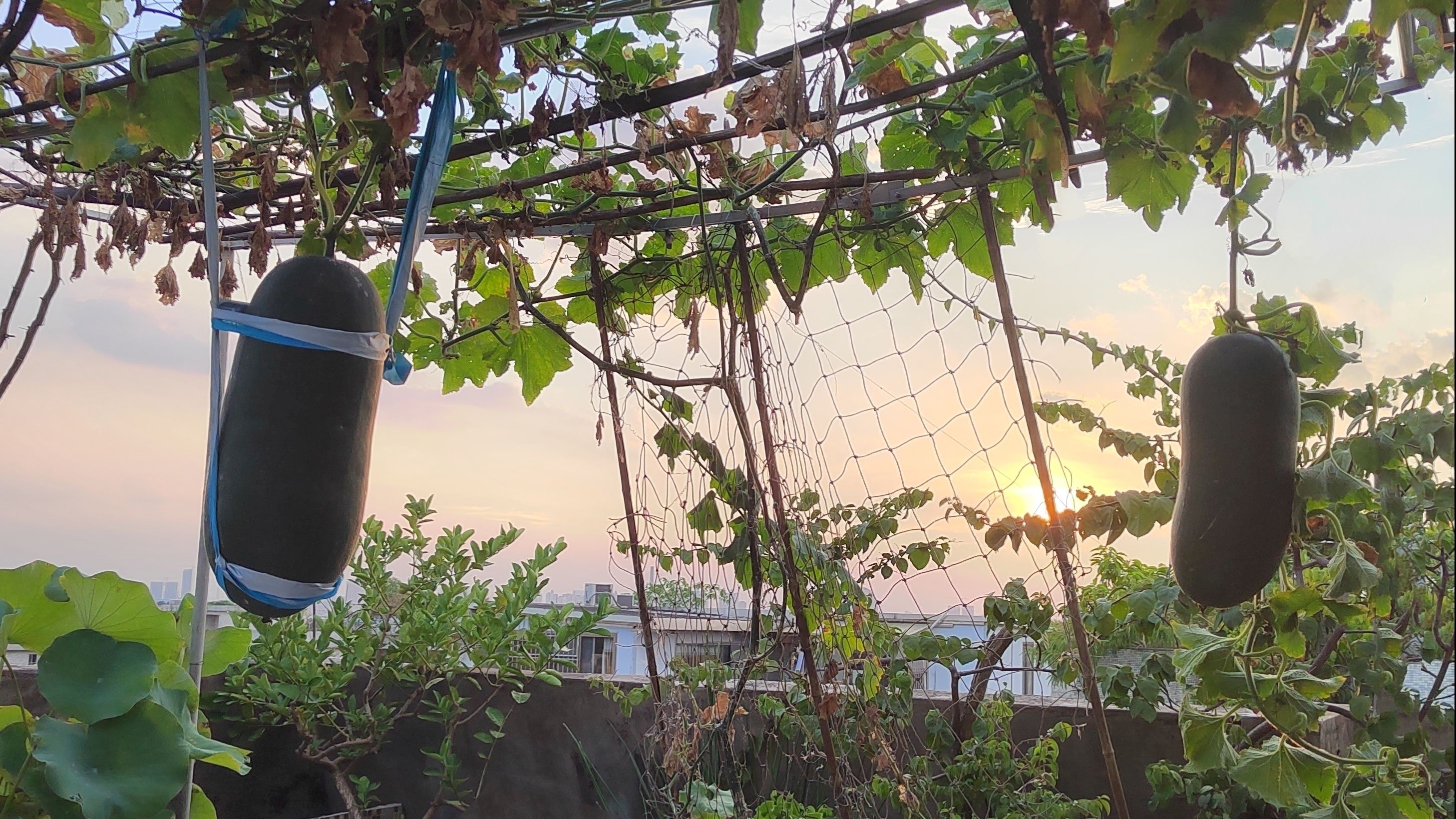Summer has arrived, and the winter melon seedlings carefully cultivated by the farmer at my home have finally spread their vines all over the rooftop, creating a scene full of greenery.
Gradually, some small yellow flowers began to bloom on the vines; some flowers grew on the top of a small winter melon that had already formed, called female flowers, while others grew only on the vines, called male flowers. By midsummer, the female flowers had already withered, and the small winter melons slowly grew larger. This year's winter melons are fewer in number but particularly large; while those in previous years weighed only a few pounds, the largest one this year weighs eighteen pounds, which is quite intimidating. When cut down, it feels like holding a baby, heavy and a bit hairy on the skin.

After the harvest, it was made into delicious dishes. In the hot summer days of the south, to relieve heat and dampness, we first use a large piece of winter melon with skin, along with fan bones, job's tears, red beans, and poria, then pick a lotus leaf from the lotus pot on the rooftop to cook together. After simmering on low heat for two small hours, it turns into a particularly sweet and delicious winter melon soup. The crops we grow ourselves have no chemical ingredients, making them much tastier than those bought in the market.
The remaining winter melon can be used to make a clam and winter melon soup, which helps reduce fat and cool down, or it can be braised with soy sauce or oyster sauce, both of which are the best dishes for summer.
A pot of steaming winter melon soup is ready to be served! Taking a sip melts away the heat of summer...
